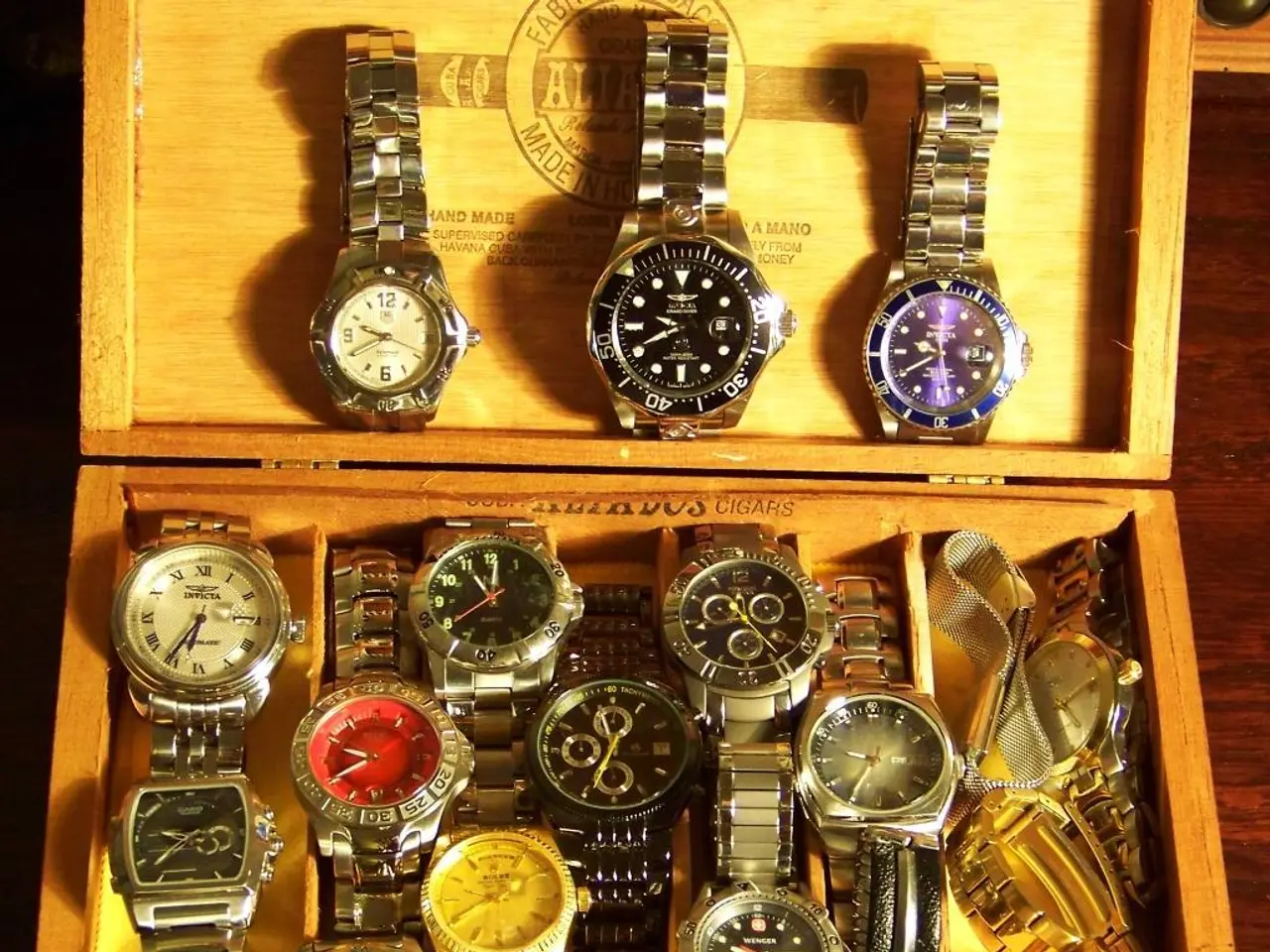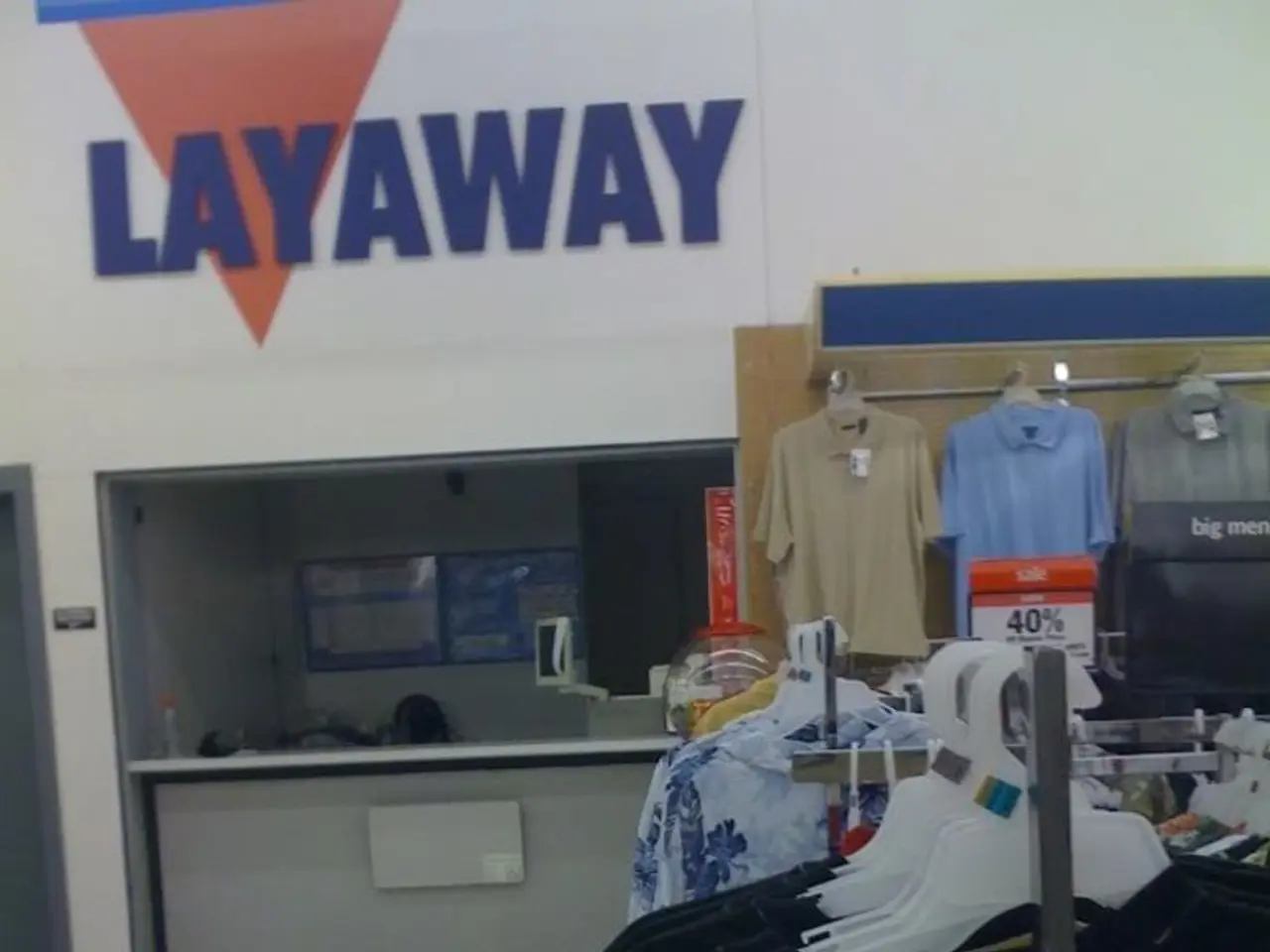Trump's proposed 39% tariff could jeopardize Rolex revenue in Switzerland
==========================================================================
The upcoming 39% tariff on Swiss watch imports to the U.S., set to take effect in 2025, is expected to significantly impact the luxury watch market. This tariff, part of a broader overhaul of U.S. trade policy, will increase costs for Swiss watch brands exporting to the U.S., leading to higher retail prices[1][3].
As a result, American consumers, particularly collectors, may become more inclined towards the second-hand market due to its lower prices. This shift in consumer behavior could potentially lead to a surge in demand for pre-owned luxury watches[2]. Platforms like Chrono24 and WatchCharts have already reported an increase in demand[4].
The tariff will likely affect major luxury brands like Rolex, Patek Philippe, Audemars Piguet, and Omega, who may pass at least part of the additional costs on to consumers[1][3]. This price hike could suppress the growth of new watch sales as buyers seek value without paying the full import tariff[1][3].
The watch industry itself views the tariff as a severe blow, augmenting challenges such as prior economic slowdowns and inflation. Independent and smaller niche Swiss watch brands face a particularly tough environment entering or expanding in the U.S. market under these new trade barriers[1].
Investment-grade watches, such as Rolex and Patek Philippe, tend to retain value in the second-hand market[5]. The growing demand for these watches in the second-hand market is outpacing the new market[6]. This trend suggests that the tariff could potentially lead to a long-term shift in consumer behavior in the luxury watch market.
In summary, the 39% tariff will likely lead to substantially higher retail prices for Swiss watches in the U.S., suppress new watch sales growth, shift consumer demand towards the second-hand market, and impose severe strain on Swiss watchmakers relying on the American market[1][3]. The tariff's impact on the luxury watch market is expected to be far-reaching, potentially reshaping the industry for years to come.
[1] Morgan Stanley and WatchCharts analysis [2] Increasing popularity of the second-hand market [3] Prices for used watches have fallen for 13 consecutive quarters [4] Second-hand watch industry accounts for nearly one-third of global watch sales [5] An analysis by Morgan Stanley and WatchCharts found that second-hand demand for investment-grade watches is increasing [6] Second-hand demand for investment-grade watches like Rolex and Patek Philippe is growing faster than the new market [7] Switzerland exported over $6 billion in timepieces to the U.S. last year, making America its top market since 2020 [8] The tariff targets all Swiss imports and is part of a broader overhaul of U.S. trade policy [9] Some prices for gold models and high-end timepieces are reportedly rising as much as 15% in anticipation of the tariff [10] Independent brands without deep financial buffers are particularly vulnerable to the tariff [11] Swatch Group, which posted "double-digit" growth in U.S. sales earlier this year, warned investors that tariffs, currency shifts, and gold prices could squeeze margins further [12] The second-hand watch market may benefit from the tariff as consumers might opt for pre-owned luxury watches due to their lower prices [13] Switzerland lacks a formal trade agreement with the U.S. by the August deadline and will face one of the highest global tariff rates under Trump’s framework [14] The tariff on Swiss imports, announced by Donald Trump, will come into force on August 7, 2025.
In light of the upcoming 39% tariff, American consumers, particularly collectors, may shift towards the second-hand market for luxury watches due to lower prices, potentially leading to a surge in demand for pre-owned luxury watches. This transition in consumer behavior could result in an increased focus on finance, as buyers seek to acquire high-value watches at lower costs.




